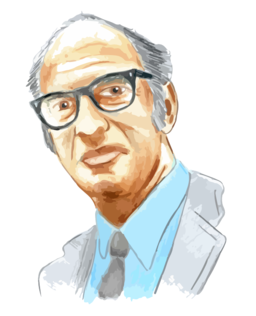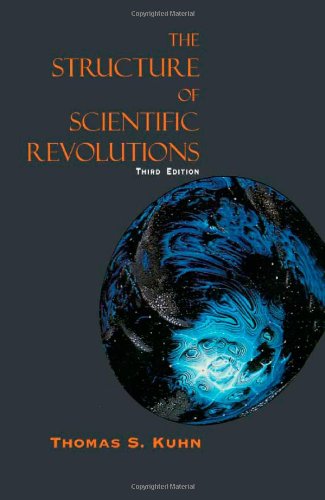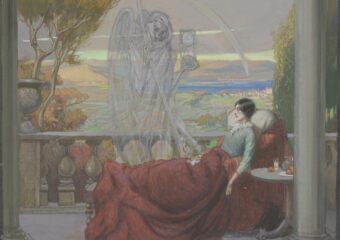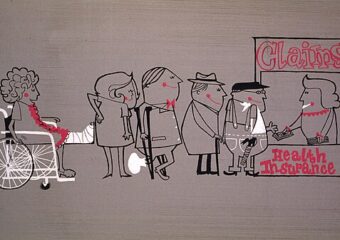The Worry
Philosopher John Huss asks in a 2022 Philosophy of Science article, “Should we worry about the reliability of medical knowledge?” During the early phase of what would be a forty-five-year career involving mostly drug technology assessment, my answer to that question would have been, not much if at all. Biomedicine had my complete confidence and fealty. Over the years, that confidence and fealty began receding, slowly, almost imperceptively. On the occasions when doubts intruded upon my consciousness, I would doubt them and try to beat them into submission. That became harder as I waited and waited for new drug therapies offering important advances that rarely or ever came, and watched more and more promising drugs fail in clinical trials, and more and more drugs withdrawn from clinical use for ineffectiveness or toxicity.
Formal studies in research methods, medical ethics, and medical humanities later exposed me to sources besides biomedical that supplemented these personal observations. One of the sources rendering a particular impact on me was the philosopher and historian of science Thomas Kuhn’s concept concerning how dominant theories and practices of science change over time, and he referred to this concept as the “structure of scientific revolutions.” He published what has become a classic text of that title in 1962, with subsequent elaborations. Here I summarize the basic concept as it influenced my confidence in the reliability of medical knowledge.
The Man and His Book
Thomas Kuhn was an aspiring physicist as he worked his way through bachelor’s, master’s, and PhD degree programs in physics. Along the way, however, the history of science grabbed his interest, and in particular how science works. He then shifted his work into that field. Kuhn went on to academic positions at four different universities from 1951 to 1991. During this period, he became interested—perhaps obsessed—with how science changed in theory and practice. In this book, The Structure of Scientific Revolutions, he reports how the accepted history of scientific progress is wrong, and how it could be better understood through history.
Kuhn rejected conventional wisdom insisting progress in science was steady, incremental, and interdependent. He chafed at how textbooks present “finished scientific achievements”, and how “the aim of such books is persuasive and pedagogic.” Kuhn wants “to show that we have been misled by [these texts] in fundamental ways…[and to] sketch the quite different concept of science that can emerge from the historical record of the research activity itself.” (p. 1)
The different concept of science Kuhn offers is a series of “revolutions” rather than increments, or the “accumulation of individual developments,” as he put it. (p. 2) His concept comprises three phases: 1) the operation of normal science; 2) the emergence of anomalies challenging normal science and creating crises, and; 3) the rise of a new approach to a scientific question that becomes the dominant normal science.
Normal Science if You Can Keep It
In Kuhn’s idea of how science changes, normal science represents the status quo and comprises the laws, theories, rules, standards, applications, and instrumentation among other properties, that together produce “coherent traditions of scientific research.” (p. 10) As an established tradition, normal science shapes the questions asked, experiments designed, data collected, interpretations provided, and practices affected. When a sufficient group of researchers and research institutions commit their work to a particular foundation, Kuhn refers to the resulting normal science as a “paradigm,” which he further distinguishes as “universally recognized scientific achievements that for a time provide model problems and solutions to a community of practitioners. (p. x) The work of normal science then, Kuhn says, becomes,
extending the knowledge of those facts that the paradigm displays as particularly revealing, by increasing the extent of the match between those facts and the paradigm’s predictions, and by further articulation of the paradigm itself.
p. 24
Using more colloquial language, Kuhn calls these activities “mopping-up operations”—remaining problems to be solved, unruly facts to be tamed. For most researchers, it is this toil that consumes them until the end of their careers or until they encounter an “ugly fact,”* challenging the foundation of the operating paradigm.
A Crisis in Paradigm
Normal science resists anomalies and inconvenient or novel facts, indeed “when successful finds none.” (p. 52) This resistance “guarantees that scientists will not be lightly distracted” and can avert their gaze from anomalies with impunity. As a result, anomalies and novelties that eventually cause paradigm change must “penetrate existing knowledge to the core,” (p. 65) and when they do, they cannot be ignored, rationalized, or solved. This “technical breakdown” in the problem-solving activity associated with a paradigm is the sine qua non of what Kuhn calls the “crisis.” What that leads to next, he says, “is insecurity generated by the persistent failure of the puzzles of normal science to come out as it should. Failure of existing rules is the prelude to a search for new ones.” (p. 68)
Shifty Paradigms
Scientists rejecting the normal science associated with a particular problem and intrigued by a new way to address unresolvable puzzles of the predecessor often meet stiff resistance from advocates of the reigning paradigm who have various motivations for staying the course. Kuhn notes that it’s younger scientists or those newer to the science most often challenging the status quo and pointing to competing paradigms that accommodate anomalies they find in the dominant normal science. Early on, they can face withering criticism and ostracism. Those who persist, and they may need to persist for years or decades, succeed when they attract enough adherents to their views for a transition to take place, occurring generally as Kuhn describes:
The transition from a paradigm in crisis to a new one from which a new tradition of normal science can emerge is far from a cumulative process, one achieved by an articulation or extension of the old paradigm. Rather it is a reconstruction of the field from new fundamentals, a reconstruction that changes some of the field’s most elementary theoretical generalizations as well as many of its paradigm methods and applications.
pp. 84-85
He notes further that “some [scientists] who cling to one or another of the older views, [will themselves be] simply read out of the profession, which thereafter ignores their work.” (p. 19)
Kuhn adopted, to his eventual regret, “paradigm shifts” as the term for this transition. His regret stems from not just the term’s overuse, but also its diminishment from referencing major and historic transitions to those of minor and inconsequential events. With his background in physics, he used examples such as the transitions of light thought of as corpuscular particles to waves and then to photons, and the transition of Ptolemaic astronomy (the Universe revolving around the Earth) to Copernican astronomy (the Earth revolving around the Sun). A contemporary example from biomedicine is the transition of peptic ulcer disease centering on stomach acid (“no acid, no ulcer,” the mantra went) to centering on the presence of the bacterium Helicobacter pylori, making the problem more related to an infectious disease process. This new paradigm for peptic ulcer disease changed the underlying theories, lines of inquiry, diagnoses, instrumentation, interpretations of data, and treatments involved. Now, alas, even the most minor changes of any given subject can provoke characterizations of paradigm shifts. Adding peanut chunks to peanut butter may be well received by consumers and a commercial success, but a paradigm shift of the type Kuhn had in mind it is not.
What Good Are They?
As for the major changes Kuhn’s paradigm shifts represent, what of them? Do these shifts inexorably get us closer to the truth? Kuhn was far from convinced they could.
A scientific theory is usually felt to be better than its predecessors not only in the sense that it is a better instrument for discovering and solving puzzles but also because it is somehow a better representation of what nature is really like. One often hears that successive theories grow ever closer to, or approximate more and more closely to, the truth…Perhaps there is some other way of salvaging the notion of ‘truth’ for application to whole theories, but this one will not do.
p. 206
He further said “the normal-scientific tradition that emerges from a scientific revolution is not only incompatible but often actually incommensurable with that which has gone before.” (p. 103) If a new paradigm has no connection to previous paradigms, then Kuhn is saying, in effect, these transitions erase history. In this case, if Newton stood on “the shoulders of giants” who came before him, nothing would be in his sight.
A literature critiquing Kuhn’s theory exists, and incommensurability is often a target; many analysts find it hard to accept absolutely no connection among previous paradigms. But, given the extent of change and of acceptance required to meet Kuhn’s standards for paradigm shifts, it seems reasonable to think that a substantial degree of incommensurability could be expected between new paradigms and their predecessors, at least in my thinking from experience in biomedical technology assessment. Philosophers and historians of science, using different analytical approaches, could think otherwise.
Worryness
Kuhn’s concepts about how widely accepted scientific theories and practices can be changed wholesale gives people dependent on them reason to worry about their reliability over time. They could be forgiven for being trepidatious in committing fully to any of them, or to any new paradigms given that changes do not necessarily come with anymore truth than predecessor paradigms, and maybe even less on occasion. How much worry, however, should one source, and a source with plenty of critics, generate? If only Kuhn’s concept is considered, the level of doubt could reasonably be attenuated. In my case, along with professional experience, other sources applying different analytical approaches, namely, Medical Nihilism by Joseph Stegenga, and Medical Nemesis by Ivan Illich, have bolstered the effect of Kuhn’s concepts.
And, thus, about the reliability of medical knowledge, I worry, a lot.
Also:
Citation:
Kuhn T. The Structure of Scientific Revolutions, 3rd ed, Chicago: The University of Chicago Press; 1996.
*Referencing Thomas Huxley’s quote: “The great tragedy of science – the slaying of a beautiful hypothesis by an ugly fact.”
Barry Marshall details in the magazine Discover, the resistance he faced trying to convince the medical community to accept his new paradigm involving H. pylori infection in peptic ulcer disease, and how he had to infect himself at great peril to strengthen his argument. He and his colleague, Robin Warren, won the 2005 Nobel Prize for Physiology or Medicine for their roles in this paradigm shift.

CC BY-SA 4.0 via Wikicommons



